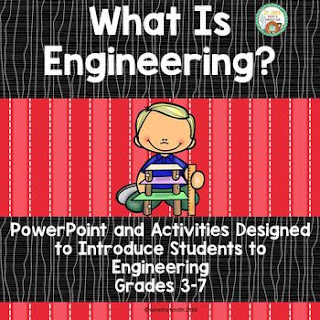Many teachers are turning to STEM challenges to get some engineering into their science curriculum. Unfortunately, many of the STEM challenges out there don't teach much about engineering or the engineering design process.
In engineering, there are several key pieces that teachers should consider when designing challenges for their students. First, engineering addresses a problem. Clients hire engineers to address a problem by designing something specific to solve a problem. Clients often have a variety of constraints that must be adhered to. Some common constraints include budget, materials, and time.
Once a specific prob;em is identified, engineers go through a specific process called the Engineering Design Process. This process involves several steps within a cycle. The first step involves addressing the problem by asking a question. Next, engineers use their creativity to imagine what a solution to the problem might be. After they come up with an idea, they make a plan. Often this step involves drawing or sketching ideas on paper. Once ideas are planned, it's time for the engineer to create a model or prototype. This model or prototype can be tested out and then improved. The process is cyclical, so engineers often go through several iterations of this process until they have a solution to the problem.
One of my newest products includes an editable power point that offers background information on what engineering is, different types of engineers, as well as the steps in the engineering design process. I also include teacher and student pages for 3 different engineering design challenges.
Check it out:


Thanks for sharing your ideas! This looks like a fun unit!
ReplyDelete